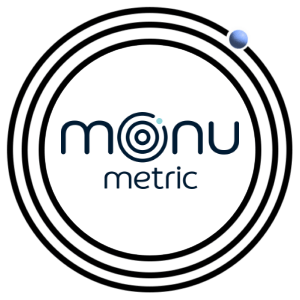Understanding Ad Performance: 6 Key Factors for Publishers
Ad performance can often be a complex topic for publishers. Despite seeing positive metrics such as increased CPMs and RPMs, overall ad revenue might still decline. This article explores the crucial factors affecting ad performance, providing insights and strategies to help publishers navigate this landscape.
- The Impact of Pageviews and Sessions
Pageviews are a fundamental metric for ad performance. Over the past year, many publishers have observed a significant decline in pageviews, which directly impacts revenue. This decline can be attributed to several factors, including changes in search engine algorithms and evolving user behavior influenced by AI advancements. When pageviews decrease, so do the opportunities for ad impressions, leading to a drop in revenue.
Equally important is the concept of sessions and multiple pageviews per session. Having users navigate through several pages in a session legitimizes them as genuine human traffic, making advertisers more willing to pay for these impressions. Publishers should make a concerted effort to include links and elements in their content that guide users to other parts of their website, encouraging longer sessions and more pageviews.
- The Role of Geography and Demographics
Not all pageviews are equal. The geographical location and demographics of your audience play a pivotal role in monetization. Shifts in traffic away from high-value markets like the United States, or even from more valuable states to less valuable ones, can impact ad rates and overall performance. Publishers should regularly review their Google Analytics and social media analytics to identify any significant changes in geographic and demographic data over the past year. This will help them determine if strategic adjustments are necessary to realign with high-value audiences and optimize ad performance.
- Timing and Ad Spend
The timing of traffic is another crucial factor. Ad spend tends to be higher at the beginning of each day (starting at midnight U.S. Eastern time) and often runs thin by midday. Publishers driving traffic later in the day may miss out on higher ad spends. By strategizing to drive traffic earlier, publishers can capitalize on peak ad spend times.
- Traffic Sources and Bounce Rate
The quality of traffic sources is crucial for ad performance. While bot traffic poses a significant risk, high bounce rates from legitimate sources can also impact revenue. When visitors leave a site quickly, ads may not have enough time to load but the pageview still gets counted, reducing monetization opportunities. Publishers should ensure their social media posts accurately represent the content of their articles, providing a clear expectation for users. This alignment helps retain visitors, reducing bounce rates, and giving ads more time to load and be viewed.
- The Pitfalls of MFAs and Short Form Articles
MFAs, or Made for Advertising websites, are designed to maximize ad impressions often at the expense of content quality. These sites frequently feature short, low-value content surrounded by numerous ads, such as slideshows where each click refreshes multiple ads. Though not explicitly against advertising terms, these practices are increasingly being avoided by advertisers. Moreover, shorter content contributes to this problem, as it fails to keep users engaged for longer periods, reducing potential ad refreshes and revenues. Publishers should focus on creating longer-form, high-quality content that engages users and provides value, thus improving both user experience and ad performance.
- Time on Site and Engagement
Engagement metrics like time on site are crucial for maximizing ad revenue. For instance, advertisements typically refresh every 30 seconds. If a user spends two minutes on a page, there could be up to four ad refreshes. However, if users only stay for 30 seconds, there’s not even enough time for one refresh. That is a 4x difference in revenue! This difference can lead to a significant variance in potential revenue. By crafting engaging content that retains users longer, publishers can increase ad refreshes and revenue.
Case Study
We have a publisher who experienced a 10% reduction in pageviews year-over-year, translating to roughly a 10% drop in revenue. Their geographic and demographic audience profiles remained relatively stable. However, their content has become significantly shorter—about 40% shorter on average—leading to around a 30% additional decline in revenue. Furthermore, they’re investing less effort in making their articles engaging. As a result, the average user session dropped sharply from 2 minutes and 42 seconds last year to just 43 seconds currently, equating to approximately a 60% additional revenue loss. While these percentages might suggest a total loss exceeding 100%, it’s essential to view them as compounding reductions, similar to how successive discounts work at retail stores. Ultimately, despite CPMs remaining stable or even slightly improving, their total revenue now sits at approximately 25% of the previous year’s figure. This example highlights why it’s crucial for publishers to regularly assess and refine their content strategies to sustain audience engagement and revenue.
Conclusion
In conclusion, understanding and optimizing factors like pageviews, sessions, traffic sources, and geographic and demographic alignment can significantly enhance ad performance. By focusing on these areas, publishers can better navigate the complexities of ad performance and improve their revenue streams. It’s also essential to stay true to your unique voice and identity. Your followers are drawn to your content because they appreciate your authenticity, style, and perspective. By maintaining this authenticity, you can continue to build a loyal audience and achieve long-term success.




